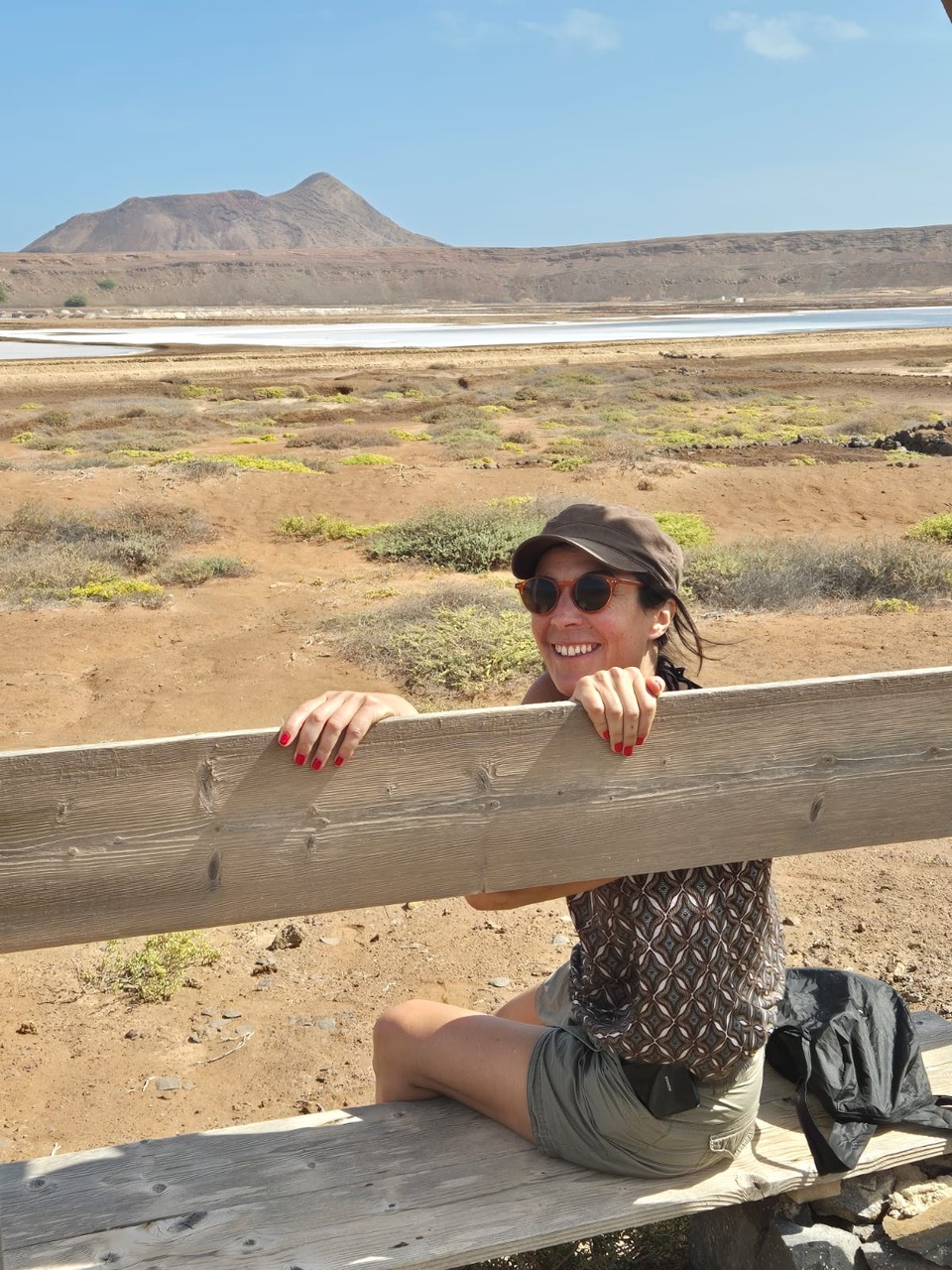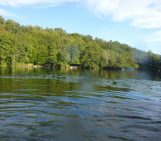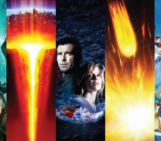
 Every leadership transition marks the beginning of a new chapter, bringing fresh perspectives, new priorities and opportunities for growth. This year, the EGU Geodynamics Division warmly welcomes Professor Laetitia Le Pourhiet as its new president. A renowned researcher at the Institut Universitaire de France and Sorbonne Université, Prof. Le Pourhiet steps into the role with a clear vision for the future.
Every leadership transition marks the beginning of a new chapter, bringing fresh perspectives, new priorities and opportunities for growth. This year, the EGU Geodynamics Division warmly welcomes Professor Laetitia Le Pourhiet as its new president. A renowned researcher at the Institut Universitaire de France and Sorbonne Université, Prof. Le Pourhiet steps into the role with a clear vision for the future.
As she begins her term, it’s a fitting moment to reflect on where the division is headed. How will geodynamics research evolve over the next few years? What are the key challenges and opportunities on the horizon? And how can the division continue to empower early-career scientists (ECS) who are shaping the field’s future?
To open the conversation, Dr. Garima Shukla, ECS representative for the Geodynamics Division, asked Prof. Le Pourhiet a few key questions about her goals for the division’s future. A major focus for Prof. Le Pourhiet will be strengthening engagement across all career stages:
“There are a couple of things I’d like to do, but they’ll only succeed with support from the community,” she shared. “For example, I think we need to boost involvement from mid-career scientists. We already have good initiatives for early-career researchers, like the OSPP contests, but mid-career engagement is lacking.”
Although the division’s medals are meant for scientists in their mid-career, Prof. Le Pourhiet brought up a crucial point: in reality, they frequently go to much more senior researchers.
“Because there’s no age limit, the medals have drifted away from their original purpose and we’ve ended up with very little gender diversity among recipients,” she noted. “We either need to refocus the existing medals or maybe even create new ones to properly recognize mid-career contributions.”
Increasing the practical application of geodynamics research, especially in the area of policy, is another goal of hers:
“At this time, the Geodynamics Division does not have a Science for Policy officer,” she stated. There is a gap there. We frequently ponder how to increase the impact of our research, and this could be a first step in closing that gap.
Prof. Le Pourhiet plans to launch a call for someone to take on this new role, helping the division engage with policy-makers and amplify the relevance of geodynamics in broader societal discussions.
“I have lots of ideas,” she added with a smile, “but it’s important to bring the community along with me. We’re writing this next chapter together.”
Advice for Early-Career Researchers: Quality, Resilience and Visibility
When asked what advice she would offer early-career researchers navigating the challenging worlds of funding and career development, Prof. Le Pourhiet didn’t hesitate:
“Do good science. Don’t take shortcuts.”
She emphasised that scientific quality should always be the foundation, more important than chasing quick publications or relying on easy wins.
“Sometimes careers don’t move as rapidly as we’d like. You may notice others being promoted while you’re not, but don’t be too critical of yourself. When you produce high-quality work all the time, it will benefit you in the long term.”
Nevertheless, she pointed out, good science isn’t sufficient; you also need to be good at communicating it.
“Be sure to communicate your research, but communication is not enough by itself. Above all, ensure the science is rigorous, solid and honest. Then figure out how to present it to the community.”
Prof. Le Pourhiet also acknowledged the systemic inequalities that can shape scientific careers. Access to funding, networks and visibility is often influenced by institutional prestige.
“Not everyone comes from the top universities. And that’s why it’s critical that we focus on the quality of the science, not just where someone is from or how visible they are.”
She spoke about the need to rethink how the community defines opportunity and excellence:
“Everyone wants to talk about equal opportunity, but equality really means ensuring that opportunity is not just available to people from elite institutions. If we’re only rewarding those who’re already visible and have access, then we’re recreating inequality.”
Her advice for young scientists? Remember that visibility and opportunity can be built, not just inherited.
“It may take more effort if you’re not coming from a prestigious network, but engaging with organizations like EGU can help. Get involved. Participate. That’s one way to build your profile and connect with the broader community.”
In short: Do rigorous science, communicate it effectively, seek out opportunities to engage and don’t let comparison or prestige define your path.
How Can Early-Career Scientists Play a More Active Role in Shaping the Division’s Future?
When it comes to the future of the EGU Geodynamics Division, Prof. Le Pourhiet is clear: early-career scientists (ECS) are already playing an essential role.
“ECS are already very active, and it’s my role to encourage mid- and late-career scientists to get more engaged,” she says. “But really what I cherish is when ECS come up with innovative, outside-the-box solutions.”
In fact, she believes that ECS are the true future of the division. However, for that future to thrive, it’s important to have support across all stages of a research career.
“We need funding to ensure ECS can attend conferences and participate fully,” Prof. Le Pourhiet continues. “But it’s also about engaging mid- and late-career scientists. My goal is to have a more balanced community where everyone, young and more experienced researchers alike, works together. The division must remain a space for collaboration, not just a platform for ECS during the General Assembly.”
While she acknowledges that ECS are already playing an active role, Prof. Le Pourhiet also stresses the need for inclusivity across all stages of a scientist’s career to truly shape the division’s future together.
How Can the EGU General Assembly Be Made More Engaging and Accessible for Researchers Worldwide?
Making the EGU General Assembly more accessible and inclusive for researchers worldwide, particularly those from underrepresented or lower-resourced regions, is a key priority. Prof. Le Pourhiet highlights some of the steps already in motion, as well as challenges that still need to be addressed.
“We’ve already made changes to our funding model to help researchers from less wealthy countries attend the assembly. For instance, we reduced funding for European participants so that we can offer more support to researchers from places like parts of Asia and Africa,” she explains.
However, it’s not just about funding, improving the hybrid conference experience is also crucial to ensure inclusivity:
“Virtual posters don’t work as well as we hoped. Personally, I think the poster pitches should be integrated into the oral sessions. That way, everyone has a chance to see and interact with them. It’s all about making virtual participation feel as much like a physical conference as possible.”
While the hybrid model has made participation easier, the issue of time zone differences remains a challenge for global inclusion.
“One suggestion has been to run virtual conferences 24/7, but that presents its own problems. If we focus on one time zone, others miss out. The goal should be to offer a truly global platform, without leaving anyone behind.”
For now, there are ongoing discussions about improving the hybrid format, making funding more comprehensive and possibly introducing smaller virtual events throughout the year.
“We are also exploring the idea of rotating the General Assembly’s location globally, similar to how AGU shifts its venue. This would help make the conference more accessible and international.”
Prof. Le Pourhiet concludes by emphasizing that these are all ongoing discussions and while challenges remain, EGU is committed to improving inclusivity and global participation.
“These conversations are important and we’re making progress. But we know there’s still work to do to make sure that all researchers, regardless of their location or institutional background, can participate fully.”
What Would You Ask?
Of course, these are just a few ideas- now I’d love to hear from you! If you had the chance to ask Prof. Laetitia one question, what would it be?
We’d love to hear from you! Share your thoughts at gd@egu.eu, and let’s make sure our voices help shape the future of geodynamics.




